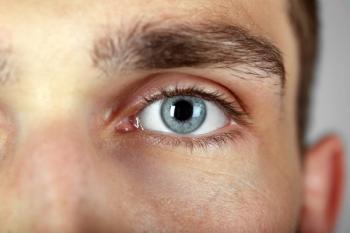
- March 2014 Mental Health
- Volume 80
- Issue 3
Insomnia: Helping Patients Catch Some Zs
Insomnia is one of the most prevalent patient complaints, ranking third after headaches and the common cold.
Insomnia is one of the most prevalent patient complaints, ranking third after headaches and the common cold.
Pharmacists are likely to encounter patients inquiring about the various nonprescription sleep aids currently on the market.
Insomnia is one of the most prevalent patient complaints, ranking third after headaches and the common cold, and can negatively impact an individual’s quality of life.1 An estimated 33% of individuals experience insomnia nightly. Pharmacists are in a pivotal position to identify medical conditions and pharmacologic agents that are associated with, or may exacerbate, insomnia and to help patients make informed choices regarding the management and treatment of insomnia.1
Causes of Insomnia
While insomnia can be a disorder in itself, it is often a symptom of a medical condition.2 Individuals with insomnia may present with complaints of trouble falling asleep, difficulty staying asleep (ie, episodes of frequent waking), and not feeling completely rested upon waking.1,2 Many factors can contribute to or exacerbate episodes of insomnia and can be classified as psychological, physical, or environmental (Table 1).1-7
Types of Insomnia
In general, insomnia can be classified as primary or secondary. Primary insomnia usually lasts for 1 month or more and is not the direct result of another sleep disorder, a general medical condition, a psychiatric disorder, or the use of a pharmacologic agent.1,3,8 Secondary insomnia is the most prevalent form of insomnia, affecting 8 of 10 individuals who experience insomnia.1,8 In secondary insomnia, an identifiable underlying source, such as certain medical conditions or pharmacologic agents, is classically the cause.1,8 Insomnia can be further categorized based on the duration and severity of the episodes (Table 2).1,8
Managing and Treating Insomnia
Because insomnia can negatively impact an individual’s quality of life and the ability to perform daily routine tasks, sleep-deprived individuals may experience symptoms such as irritability, difficulty concentrating, cognitive impairment, extreme fatigue, and anxiety. Before a pharmacist recommends any type of treatment, the possible causes, the duration, and the severity of the symptoms of insomnia should be evaluated to determine the most appropriate treatment. In addition, a patient’s medical, medication, and allergy histories should be taken into consideration.
Nonprescription drugs marketed for insomnia are indicated for the treatment of transient and short-term sleep disorders in individuals who occasionally have sleep problems (Table 3).2 The available formulations include single-entity antihistamine products containing diphenhydramine or doxylamine.1 Most nonprescription sleep aids contain diphenhydramine and should be taken 30 to 60 minutes before bedtime and only as needed. These products are available in various dosage forms, including tablets, chewable tablets, elixirs, capsules, and liquid. For example, Procter and Gamble’s ZzzQuil contains diphenhydramine and is available in liquid and gelcaps. Other available formulations include products with an antihistamine—analgesics for individuals whose insomnia is due to uncontrolled pain. Diphenhydramine and doxylamine are classified as ethanolamine antihistamines and are thought to affect sleep through their affinity for blocking histamine1 and muscarinic receptors.1
In addition, various alternative complementary products are available, including melatonin products, valerian, and kava.1
Patient Counseling
During counseling, patients should be advised not to take more than 50 mg of diphenhydramine and to take it for no longer than 10 days, unless otherwise directed by their physician.1 Common adverse effects may include morning grogginess, dry mouth, constipation, and blurred vision.1 Patients of advanced age, those with chronic medical conditions, and those taking multiple medications are at greater risk for developing adverse drug reactions.1
Prior to recommending any nonprescription drugs for insomnia, pharmacists should always screen patients for potential drug interactions or contraindications and ascertain whether a patient is an appropriate candidate for the use of these products.1 During counseling, patients should be reminded that nonprescription sleep aids are indicated for short-term use; patients with chronic insomnia should be referred for medical evaluation when warranted.1,2
Patients electing to use these products should be advised of their potential adverse effects, drug interactions, contraindications, and precautions. Patients should be advised to adhere to recommended dosage guidelines and to avoid driving or operating machinery until their response to these products is known.1 Patients should be reminded to avoid the use of alcohol when taking these products.
These products are contraindicated in patients with prostatic hyperplasia and difficulty urinating, glaucoma, emphysema, and chronic bronchitits.1,9 Patients with cardiovascular disease such as angina may be more susceptible to anticholinergic adverse effects of these products and should therefore not use them.1,9 Individuals with insomnia who are younger than 12 years, older than 65 years, pregnant, or breast-feeding, or who have preexisting medical conditions, should consult their primary health care provider prior to using any of these products. Patients should be advised not to take more than 1 sleep aid product at a time or any products that may contain antihistamines, including topical antihistamine products, while taking sleep aids.
Pharmacists can suggest nonpharmacologic measures that may increase the likelihood of a good night’s sleep (Online Tables 4 and 5) and should refer patients with chronic insomnia to their primary health care provider to discuss the various prescription drugs for the treatment of insomnia.
Table 4: Nonpharmacologic Measures to Aid in Insomnia Treatment
- Prior to going to bed, make sure that the sleeping environment is conducive to sleep by minimizing light and noise and ensuring that the room temperature is comfortable.
- Establish a bedtime ritual by going to bed at the same time each day. When possible, avoid napping during the day.
- Avoid eating heavy meals prior to bedtime.
- Practice relaxation techniques prior to bedtime.
- Avoid the use of caffeine, nicotine, and alcohol at least 4 to 6 hours before bedtime.
- Exercise regularly about 6 to 8 hours before bedtime.
Adapted from references 1, 5, and 7.
Table 5: Insomnia Resources
- National Institutes of Health National Center on Sleep Disorders Research website: www.nhlbi.nih.gov/sleep
- American Sleep Association website: www.sleepassociation.org
- National Sleep Foundation website: www.sleepfoundation.org
Ms. Terrie is a clinical pharmacy writer based in Haymarket, Virginia.
References
- Kirkwood C, Melton S. Insomnia. In: Krinsky D, Berardi R, Ferreri S, et al, eds. Handbook of Nonprescription Drugs. 17th ed. Washington, DC: American Pharmacists Association; 2012.
- Can’t sleep? what to do about insomnia. National Sleep Foundation website. www.sleepfoundation.org/sleep-news/cant-sleep-what-do-about-insomnia. Accessed January 28, 2014.
- Insomnia facts. National Sleep Foundation website. www.sleepfoundation.org/sleep-facts-information/study-hall. Accessed January 28, 2014.
- Insomnia. National Sleep Foundation Association website. www.sleepfoundation.org/article/ask-the-expert/insomnia. Accessed January 28, 2014.
- Kelly J. Insomnia lasts for years if left untreated. Medscape website. www.medscape.com/viewarticle/589428. Accessed January 28, 2014.
- Insomnia. Medline Plus website. www.nlm.nih.gov/medlineplus/ency/article/000805.htm. Accessed January 28, 2014.
- Sleep aids and insomnia. National Sleep Foundation website. www.sleepfoundation.org/article/sleep-related-problems/sleep-aids-and-insomnia. Accessed January 29, 2014.
- Characterizations of insomnia. National Sleep Foundation website. www.sleepfoundation.org/insomnia/what-is-insomnia/types. Accessed January 28, 2014.
- Diphenhydramine product information. Medscape website. http://reference.medscape.com/drug/benadryl-nytol-diphenhydramine-343392. Accessed January 31, 2014.
Articles in this issue
over 11 years ago
Migraines Not More Prevalent in RLS Patientsover 11 years ago
RLS Symptoms Worse in the Summerover 11 years ago
Late-Night Snacking Common Among RLS Patientsover 11 years ago
Higher Vitamin D Level May Improve Parkinson's Disease Symptomsover 11 years ago
Pesticides Linked to Increased Parkinson's Disease Riskover 11 years ago
Deep Brain Stimulation Helps Parkinson's Disease Patients Driveover 11 years ago
Obesity May Affect Hearingover 11 years ago
Healthy Diets Don't Cost Much More Than Unhealthy Onesover 11 years ago
Pet Peevesover 11 years ago
Case StudiesNewsletter
Stay informed on drug updates, treatment guidelines, and pharmacy practice trends—subscribe to Pharmacy Times for weekly clinical insights.

















































































































































































































